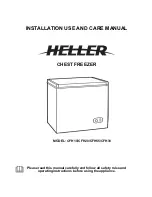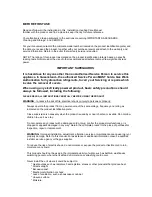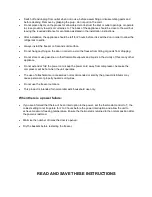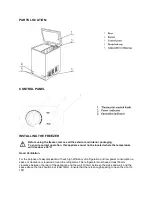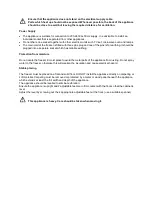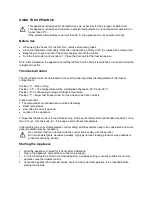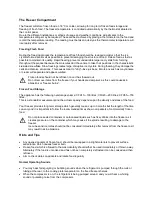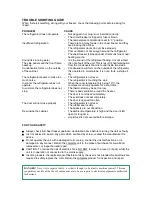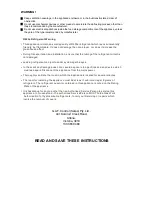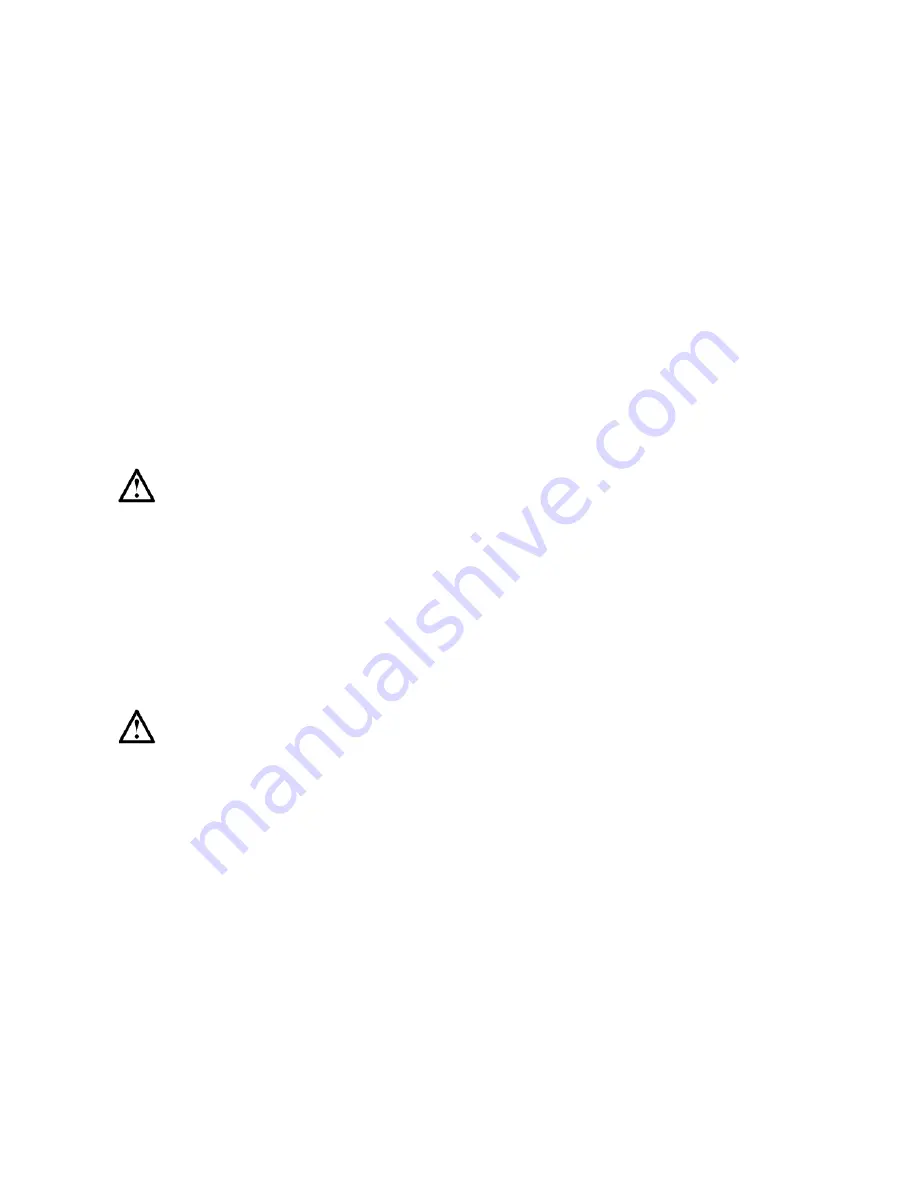
The Freezer Compartment
The freezer will store frozen food at -18°C or colder, allowing for long term frozen food storage and
freezing of fresh food. The freezer temperature is controlled automatically by the thermostat situated in
the control panel.
Due to the different installations, methods of usage and weather conditions, adjustments to the
temperature settings may be required. These are best achieved by placing a thermometer on the food and
record the temperature reading. The reading must be taken quickly as the thermometer temperature will
rise rapidly after removal.
Freezing Fresh Food
During the freezing process the temperature of fresh food should be reduced quickly so that the ice
crystals formed are small as possible to prevent damaging the structure of food. Freeze food as fast as
possible to maintain its quality. Rapid freezing prevents undesirable large ice crystals from forming
throughout the product because the molecules don't have time to take their positions in the characteristic
six-sided snowflake. Slow freezing creates large, disruptive ice crystals. During thawing, they damage the
cells and dissolve emulsions. This causes meat to "drip"--lose juiciness. Emulsions such as mayonnaise
or cream will separate and appear curdled.
Frozen foods should not be refrozen once it has thawed out.
Do not remove items from the freezer if your hands are damp/wet, as this could cause skin
abrasions or “freezer burns”.
Frozen Food Storage
The appliance has the following net storage volume: CFH10—100 litres; CFH20—200 litres; CFH55—155
litres.
This is a standard measurement and the actual capacity depends upon the density and sizes of the food.
Your freezer provides long term storage which generally means up to 3 months but the length of the time
can vary and it is important to follow the recommended times shown on packets of commercially frozen
food.
Do not place sealed containers or carbonated liquids such as fizzy drinks into the freezer as it
creates pressure on the container which may cause it to explode resulting to damage to the
freezer.
Ice cubes and ice lollies should not be consumed immediately after removal from the freezer as it
may result in skin abrasions.
Hints and Tips
•
Any opened packets of frozen food, should be rewrapped in airtight materials to prevent surface
evaporation which causes freezer burn.
•
Frozen food which is allowed to thaw accidentally should either be used immediately or thrown away.
Alternately if the food is uncooked and has not been completely defrosted it can be cooked and then
refrozen.
•
Aim to check dates on packets and rotate food regularly.
Normal Operating Sounds
•
You may hear faint gurgling or bubbling sounds when the refrigerant is pumped through the coils or
tubing at the rear, to the cooling plate/evaporator on the fixed freezer shelves.
•
When the compressor is on, the refrigerant is being pumped around, and you will hear a whirring
sound or pulsating noise from the compressor.

